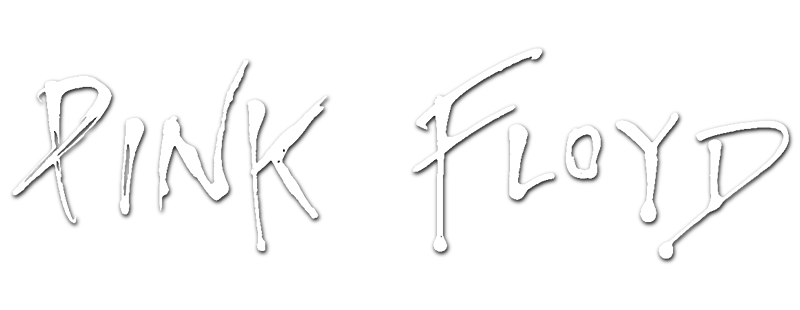
Cover NOT yet available in
Join up for 4K upload/download access
Your Rating (Click a star below)
![]()
![]()
![]()
![]()
![]()
![]()
![]()
![]()
![]()
![]()
Track List
01) Shine On You Crazy Diamond, Parts I–V
02) Welcome to the Machine

03) Have a Cigar
04) Wish You Were Here
05) Shine On You Crazy Diamond, Parts VI–IX
01) Shine On You Crazy Diamond, Parts I–V
02) Welcome to the Machine
03) Have a Cigar
04) Wish You Were Here
05) Shine On You Crazy Diamond, Parts VI–IX
13:30
7:26
5:08
5:40
12:22
Data Complete 80%
Total Rating
Total Rating
![]() (8 users)
(8 users)
Back Cover
CD Art
3D Case
3D Thumb
3D Flat
3D Face
3D Spine
First Released
![]() 1975
1975
![]() Progressive Rock
Progressive Rock
![]() Dreamy
Dreamy
![]() Rock/Pop
Rock/Pop
![]() ---
---
![]() Medium
Medium
![]() Album
Album
![]() 20,000,000 copies
20,000,000 copies
Album Description
Available in:







Wish You Were Here è il nono album in studio del gruppo progressive rock inglese Pink Floyd, pubblicato nel settembre 1975. Ispirato dal materiale raccolto durante le loro esibizioni in tutta Europa, fu registrato in numerose sessioni agli Abbey Road Studios di Londra. L'album esplora i temi dell'assenza, dell'industria musicale e del declino mentale dell'ex membro della band Syd Barrett. Le sessioni iniziali furono un processo difficile e faticoso, ma il bassista Roger Waters ebbe l'idea di dividere la suite "Shine on You Crazy Diamond" in due parti, per poi unire ogni metà con tre nuove composizioni. "Shine On" è un tributo a Syd Barrett che, ironia della sorte, si presentò negli studi di registrazione il 5 giugno 1975, proprio mentre la stavano registrando. La band, all'inizio, non riuscì a riconoscere l'ex chitarrista, poiché aveva guadagnato peso e cambiato aspetto.
Come per l'album precedente, The Dark Side of the Moon, la band fece uso di effetti sonori e di sintetizzatori. Roy Harper collaborò come cantante nella canzone "Have a Cigar".
Il disegno artistico sull'imballaggio dell'album, ancora una volta realizzato da Storm Thorgerson, conteneva uno sfondo nero e opaco, che nascondeva la copertina dell'album. Wish You Were Here fu presentato a Knewborth nel luglio del 1975 e pubblicato nel settembre dello stesso anno. Fu un successo immediato; la compagnia di registrazione dei Pink Floyd, la EMI, non riusciva a stampare copie sufficienti per soddisfare la domanda. L'album raggiunge la prima posizione nella Billboard 200 per due settimane, nella UK Albums Chart, in Olanda e Nuova Zelanda e la seconda in Austria e Norvegia.
L'album, dopo un primo periodo di critiche contrastanti, fu acclamato dai critici ed è tuttora posizionato al duecentoundicesimo posto della lista "The 500 Greatest Albums of All Time" pubblicata dalla rivista musicale Rolling Stone. I membri della band Richard Wright e David Gilmour dichiararono che Wish You Were Here è il loro album dei Pink Floyd preferito.

User Album Review
As the follow-up to the Floyd’s iconic, record-breaking 1973 concept album The Dark Side Of The Moon, this album is often unfairly overlooked. With the benefit of hindsight, Wish You Were Here has the same faultless pacing and sequencing of its predecessor, but a more coherent musical narrative, structure and tone, as well as greater lyrical sophistication. Here, the ‘concept’ is more down-to-earth, since much of the record is an extended tribute to the late Syd Barrett the genius behind their early works, who flew too high and burned too bright, becoming one of rock’s most infamous drug casualties before Pink Floyd emerged from London¹s psychedelic underground scene to become one of the biggest success stories of the 1970s. It’s also the last great album by a band that would produce something as adolescently puerile as The Wall by the end of that decade.
Barrett is the subject of the epic “Shine On You Crazy Diamond, parts One and Two” of which take up more than half the playing time and bookend just three other shorter tracks. Despite some questionable keyboard tones from Richard Wright, the majestically unhurried instrumental intro is a triumph of suspense. It¹s nearly nine minutes before Roger Waters starts singing and the effect is startling, as are the words: ‘Remember when you were young?/ You shone like the sun / Shine On You Crazy Diamond!/ Now there’s a look in your eye / Like black holes in the sky’. It’s debatable whether the ‘iPod generation’ will get all of the eerie, almost visual sound detail in the more melodramatic “Welcome To The Machine”, which presages some of the pomp of their later work. Guest vocalist Roy Harper is a gritty presence on the music industry-bating “Have A Cigar” and the breathless title track finds Waters’ lyrics at their most soul searching. Some may baulk at Dave Gilmour’s long, bluesy guitar workouts, which form the backbone of “Shine On You Crazy Diamond” and crop up throughout the album. Hey, these were the dying days of prog. rock. Punk was just around the corner and it’s easy to see why, but mid-seventies post-psychedelic angst seldom sounded so chilled.
External Album Reviews
None...
User Comments


Available in:
Wish You Were Here è il nono album in studio del gruppo progressive rock inglese Pink Floyd, pubblicato nel settembre 1975. Ispirato dal materiale raccolto durante le loro esibizioni in tutta Europa, fu registrato in numerose sessioni agli Abbey Road Studios di Londra. L'album esplora i temi dell'assenza, dell'industria musicale e del declino mentale dell'ex membro della band Syd Barrett. Le sessioni iniziali furono un processo difficile e faticoso, ma il bassista Roger Waters ebbe l'idea di dividere la suite "Shine on You Crazy Diamond" in due parti, per poi unire ogni metà con tre nuove composizioni. "Shine On" è un tributo a Syd Barrett che, ironia della sorte, si presentò negli studi di registrazione il 5 giugno 1975, proprio mentre la stavano registrando. La band, all'inizio, non riuscì a riconoscere l'ex chitarrista, poiché aveva guadagnato peso e cambiato aspetto.
Come per l'album precedente, The Dark Side of the Moon, la band fece uso di effetti sonori e di sintetizzatori. Roy Harper collaborò come cantante nella canzone "Have a Cigar".
Il disegno artistico sull'imballaggio dell'album, ancora una volta realizzato da Storm Thorgerson, conteneva uno sfondo nero e opaco, che nascondeva la copertina dell'album. Wish You Were Here fu presentato a Knewborth nel luglio del 1975 e pubblicato nel settembre dello stesso anno. Fu un successo immediato; la compagnia di registrazione dei Pink Floyd, la EMI, non riusciva a stampare copie sufficienti per soddisfare la domanda. L'album raggiunge la prima posizione nella Billboard 200 per due settimane, nella UK Albums Chart, in Olanda e Nuova Zelanda e la seconda in Austria e Norvegia.
L'album, dopo un primo periodo di critiche contrastanti, fu acclamato dai critici ed è tuttora posizionato al duecentoundicesimo posto della lista "The 500 Greatest Albums of All Time" pubblicata dalla rivista musicale Rolling Stone. I membri della band Richard Wright e David Gilmour dichiararono che Wish You Were Here è il loro album dei Pink Floyd preferito.
User Album Review
As the follow-up to the Floyd’s iconic, record-breaking 1973 concept album The Dark Side Of The Moon, this album is often unfairly overlooked. With the benefit of hindsight, Wish You Were Here has the same faultless pacing and sequencing of its predecessor, but a more coherent musical narrative, structure and tone, as well as greater lyrical sophistication. Here, the ‘concept’ is more down-to-earth, since much of the record is an extended tribute to the late Syd Barrett the genius behind their early works, who flew too high and burned too bright, becoming one of rock’s most infamous drug casualties before Pink Floyd emerged from London¹s psychedelic underground scene to become one of the biggest success stories of the 1970s. It’s also the last great album by a band that would produce something as adolescently puerile as The Wall by the end of that decade.
Barrett is the subject of the epic “Shine On You Crazy Diamond, parts One and Two” of which take up more than half the playing time and bookend just three other shorter tracks. Despite some questionable keyboard tones from Richard Wright, the majestically unhurried instrumental intro is a triumph of suspense. It¹s nearly nine minutes before Roger Waters starts singing and the effect is startling, as are the words: ‘Remember when you were young?/ You shone like the sun / Shine On You Crazy Diamond!/ Now there’s a look in your eye / Like black holes in the sky’. It’s debatable whether the ‘iPod generation’ will get all of the eerie, almost visual sound detail in the more melodramatic “Welcome To The Machine”, which presages some of the pomp of their later work. Guest vocalist Roy Harper is a gritty presence on the music industry-bating “Have A Cigar” and the breathless title track finds Waters’ lyrics at their most soul searching. Some may baulk at Dave Gilmour’s long, bluesy guitar workouts, which form the backbone of “Shine On You Crazy Diamond” and crop up throughout the album. Hey, these were the dying days of prog. rock. Punk was just around the corner and it’s easy to see why, but mid-seventies post-psychedelic angst seldom sounded so chilled.
External Album Reviews
None...
User Comments

No comments yet...

